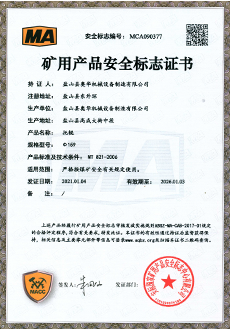 Afrikaans
Afrikaans  Albanian
Albanian  Amharic
Amharic  Arabic
Arabic  Armenian
Armenian  Azerbaijani
Azerbaijani  Basque
Basque  Belarusian
Belarusian  Bengali
Bengali  Bosnian
Bosnian  Bulgarian
Bulgarian  Catalan
Catalan  Cebuano
Cebuano  Corsican
Corsican  Croatian
Croatian  Czech
Czech  Danish
Danish  Dutch
Dutch  English
English  Esperanto
Esperanto  Estonian
Estonian  Finnish
Finnish  French
French  Frisian
Frisian  Galician
Galician  Georgian
Georgian  German
German  Greek
Greek  Gujarati
Gujarati  Haitian Creole
Haitian Creole  hausa
hausa  hawaiian
hawaiian  Hebrew
Hebrew  Hindi
Hindi  Miao
Miao  Hungarian
Hungarian  Icelandic
Icelandic  igbo
igbo  Indonesian
Indonesian  irish
irish  Italian
Italian  Japanese
Japanese  Javanese
Javanese  Kannada
Kannada  kazakh
kazakh  Khmer
Khmer  Rwandese
Rwandese  Korean
Korean  Kurdish
Kurdish  Kyrgyz
Kyrgyz  Lao
Lao  Latin
Latin  Latvian
Latvian  Lithuanian
Lithuanian  Luxembourgish
Luxembourgish  Macedonian
Macedonian  Malgashi
Malgashi  Malay
Malay  Malayalam
Malayalam  Maltese
Maltese  Maori
Maori  Marathi
Marathi  Mongolian
Mongolian  Myanmar
Myanmar  Nepali
Nepali  Norwegian
Norwegian  Norwegian
Norwegian  Occitan
Occitan  Pashto
Pashto  Persian
Persian  Polish
Polish  Portuguese
Portuguese  Punjabi
Punjabi  Romanian
Romanian  Russian
Russian  Samoan
Samoan  Scottish Gaelic
Scottish Gaelic  Serbian
Serbian  Sesotho
Sesotho  Shona
Shona  Sindhi
Sindhi  Sinhala
Sinhala  Slovak
Slovak  Slovenian
Slovenian  Somali
Somali  Spanish
Spanish  Sundanese
Sundanese  Swahili
Swahili  Swedish
Swedish  Tagalog
Tagalog  Tajik
Tajik  Tamil
Tamil  Tatar
Tatar  Telugu
Telugu  Thai
Thai  Turkish
Turkish  Turkmen
Turkmen  Ukrainian
Ukrainian  Urdu
Urdu  Uighur
Uighur  Uzbek
Uzbek  Vietnamese
Vietnamese  Welsh
Welsh  Bantu
Bantu  Yiddish
Yiddish  Yoruba
Yoruba  Zulu
Zulu conveyor pulley parts
Understanding Conveyor Pulley Parts
Conveyor systems are integral components of many industries, facilitating material handling and transportation in an efficient manner. One of the key elements in these systems is the conveyor pulley. Understanding the various parts of conveyor pulleys can enhance your knowledge of how these systems function and help in the maintenance and operation of the equipment.
1. Definition and Function
A conveyor pulley is a circular device used in conveyor systems to help guide and support the belt, enabling the movement of materials. Pulleys can be found at various points along the conveyor, including at the head (drive pulley), tail (return pulley), and in the middle of the conveyor (snub pulley). The primary function of a pulley is to redirect the belt and assist in the load movement.
2. Key Components of Conveyor Pulleys
The construction of conveyor pulleys typically involves several crucial parts
- Shell The shell is the outer cover of the pulley and is usually made from heavy-duty steel. It serves as the primary structure that holds the other components in place and handles the wear and tear from the belt's movement.
- End Disks These are circular plates welded to the ends of the shell, providing structural integrity. End disks also assist in the alignment of the pulley on the shaft and prevent debris from entering the internal parts.
- Shaft The shaft is a cylindrical rod that runs through the center of the pulley. It provides the axis around which the pulley rotates. Typically made of premium steel, the shaft must withstand significant loads and torque.
- Bearing Bearings are crucial for smooth rotation. They are mounted on the shaft and allow the pulley to turn freely. High-quality bearings reduce friction and wear, leading to a longer life for the pulley system.
conveyor pulley parts

- Lagging This is a layer added to the surface of the pulley to enhance grip and reduce slippage. Lagging materials, like rubber, improve traction between the pulley and the conveyor belt, ensuring efficient operation.
There are several types of conveyor pulleys, each designed for specific applications
- Drive Pulleys Power the conveyor belt by transmitting the motor’s torque. They are usually located at the head of the conveyor.
- Tail Pulleys Positioned at the end of the conveyor, these pulleys support the return side of the belt.
- Snub Pulleys These pulleys adjust the angle and tension of the conveyor belt and help maintain proper alignment.
4. Maintenance and Care
Regular maintenance of conveyor pulleys is essential to ensure the longevity and efficiency of the conveyor system. Inspections should include checking for wear on the shell and lagging, ensuring the bearings rotate freely, and monitoring the alignment of the shaft. Prompt replacement of worn parts can prevent more significant problems down the line.
In conclusion, understanding the various parts of conveyor pulleys is vital for anyone involved in material handling and logistics. The efficiency of conveyor systems greatly depends on the proper functioning of these components, making knowledge and maintenance essential for operational excellence. As industries continue to evolve, so too will the innovations in conveyor pulley design and functionality, driving advancements in efficiency and performance across various sectors.
-
Revolutionizing Conveyor Reliability with Advanced Rubber Lagging PulleysNewsJul.22,2025
-
Powering Precision and Durability with Expert Manufacturers of Conveyor ComponentsNewsJul.22,2025
-
Optimizing Conveyor Systems with Advanced Conveyor AccessoriesNewsJul.22,2025
-
Maximize Conveyor Efficiency with Quality Conveyor Idler PulleysNewsJul.22,2025
-
Future-Proof Your Conveyor System with High-Performance Polyurethane RollerNewsJul.22,2025
-
Driving Efficiency Forward with Quality Idlers and RollersNewsJul.22,2025





























